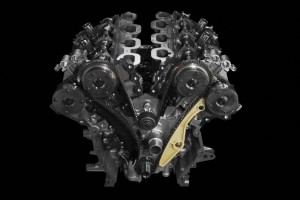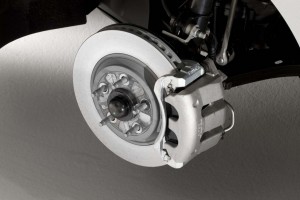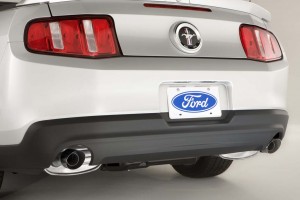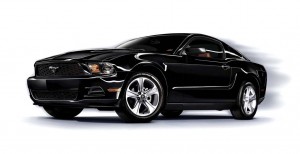Performance and fuel economy aren’t words you normally use in the same sentence. Not until now, anyway, but with the upcoming debut of the 2011 Ford Mustang, the two words suddenly have a lot more in common than they used to.
Ford will officially pull the wraps off the ’11 Mustang V6 at this week’s Los Angeles Motor Show and it will feature a new 3.7-liter Duratec powertrain that is clearly going to turn heads on road and track.
Using twin-independent variable cam timing, piston cooling jets and polished valvetrain tappets the 3.7 liter V6 powertrain in the 2011 Ford Mustang turns out an impressive 305 horsepower, a whopping 95 horsepower increase from the old 4.0-liter version. Torque jumps to 280, an increase of 40 lb-ft.
But for many, the real news is on the fuel economy front. Despite the massive increase in output, the updated Mustang V6 will be rated at a solid 30 mpg on the highway, for 2011, an increase of more than 15%. In the EPA’s City cycle, mileage jumps from 18 to 19.

For 2011, Mustang V-6 is powered by a 3.7 liter dual-overhead-cam (DOHC) 24-valve V-6 that uses Fords Twin Independent Variable Camshaft Timing (Ti-VCT) to produce 305 horsepower and 280 ft.-lb. of torque while still achieving up to 30 mpg highway.
The goal, said Ford’s engineering vice president, Barb Samardzich, is to deliver a car that’s “not only fast and fun, but fuel-efficient.”
Those mileage numbers, we should quickly point out, are with a 6-speed automatic. Mileage actually dips a bit with a manual transmission. That may seem counter intuitive, but it’s becoming more commonplace, these days, due to advances in gearbox designs, such as improved lock-up systems. And with the automatic, the V6 gets a fuel cut-off system that works whenever you decelerate.
Though we’ll have to wait awhile to get a first-hand feel for the 2011 Ford Mustang, the automaker did fire up a prototype during a secret background briefing, earlier this month. One of the more pleasant surprises was the deep, resonant exhaust note produced by the 3.7 liter engine, a sharp contrast to the more grating sound of the new EcoBoost V6 in the 2010 Taurus SHO, one of the few notable complaints about the performance version of the new performance sedan.

The 2011 Ford Mustang V6 also gets more stopping power thanks to new disc brakes borrowed from the Mustang GT.
We’ll be particularly interested in seeing how the 2011 Ford Mustang handles as the automaker is adapting a new electronic power-assisted steering, or EPAS, system. The technology saves a significant amount of fuel compared with hydraulic power steering but, on early applications, tended to create a numb and isolated feel. To overcome that problem, Ford has mounted the electric assist system on the steering rack, rather than on the column. A similar approach has proved effective for several makers, including Volkswagen.
Upgrading the V6 version of the Mustang is a critical step for Ford. The old model used a truck-derived powertrain that lacked the refinement of the bigger V8, which may have been fine when the automaker had the pony car market all to itself. But things have changed since the launch of the all-new Chevrolet Camaro, earlier this year.
The revived General Motors offering – largely based on the classic ’67 muscle car – has taken the U.S. market by storm. As with must cars in the segment, the V6 has become the real volume offering for Chevy, and the more refined package is a key reason why Camaro has been sharply outselling Mustang for the first time in decades.

Ford hopes this is the only view folks will see while driving the new Chevrolet Camaro. But, for the first time in decades, there's a real horse race between the two pony cars.
“We’re attacking a newer customer, a younger customer, and we’re going after Camaro,” said Mustang’s chief engineer, Dave Pericak, adding that there will be other refinements made to the 2011 V6. It will get the more expensive Mustang GT’s better brakes, for one thing.
Ford is being coy with hard performance numbers – though we could hear more at the LA Auto Show preview. But a Ford official noted that not only does the new 2011 Mustang V6 have some solid numbers from under the hood, but that the car is almost 300 pounds lighter than its Chevy competition.
As for what’s in store for the Mustang V8, well we’ll also have to wait and see about that. For now, there appears to be no plan to replace the eight-banger with an even more powerful version of EcoBoost, but as TheDetroitBureau.com reported, a few weeks back, Ford has been looking at adapting the twin-turbo technology to one of its V8s, which could make for a very interesting alternative to the big-block engine in today’s Shelby GT500.
More, we assume, is yet to come.
E

